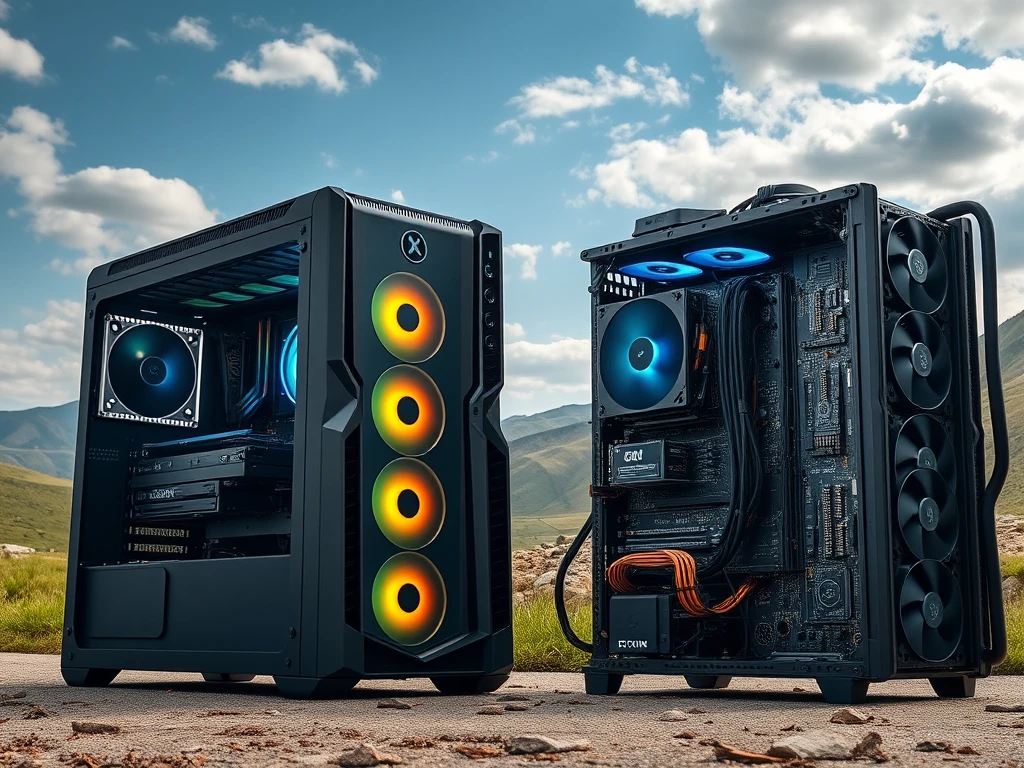Unlock the Facts: Can You Mine Bitcoin With a Gaming PC?

With Bitcoin prices soaring and transaction fees rising, the idea of mining Bitcoin at home is appealing. If you own a powerful gaming PC, you might wonder if it can earn you some extra income by mining crypto. Can you mine Bitcoin with a gaming PC? Let’s explore the facts.
Understanding Bitcoin Mining on PC
Bitcoin mining is the process that validates transactions and adds new blocks to the blockchain. This secures the network without a central authority. Miners use computing power to solve complex mathematical problems based on the SHA-256 algorithm. The first miner to find a valid solution for a block earns a reward, currently 3.125 BTC plus transaction fees (as of May 2025).
The difficulty of these problems adjusts to keep block times around 10 minutes. As more computing power joins the network, the difficulty increases significantly. This increase in difficulty is the main reason why mining hardware has evolved.
From CPUs to ASICs: The Evolution of Mining Hardware
Bitcoin mining started simple. Early miners used standard computer CPUs. As mining became popular, people discovered that GPUs (graphics processing units), designed for tasks like gaming, were much more efficient at solving the mining problems than CPUs. This led to the rise of GPU mining farms.
However, the arms race didn’t stop there. Application-Specific Integrated Circuits (ASICs) were developed specifically for Bitcoin’s SHA-256 algorithm. These machines are designed with one purpose: mining Bitcoin as efficiently as possible. By around 2015, ASICs became so powerful and efficient that they made GPU mining for Bitcoin largely obsolete.
ASIC vs GPU Mining: Why Gaming PCs Fall Short for BTC
Comparing a gaming PC’s GPU to a modern ASIC miner for Bitcoin is not a fair fight. Here’s why mining Bitcoin on PC with a GPU is generally not viable:
-
Performance: A high-end gaming GPU, like an RTX 4090, measures its performance in megahashes per second (MH/s). A modern Bitcoin ASIC miner measures performance in terahashes per second (TH/s) or even petahashes per second (PH/s). One TH/s is a million MH/s. An ASIC can easily outperform a top GPU by a million times or more for the SHA-256 algorithm.
-
Efficiency: This is where the real cost lies. While a GPU might consume a few hundred watts, an ASIC consumes thousands. However, the ASIC delivers vastly more hashes per watt consumed. This means the electricity cost per valid hash attempt is significantly lower for an ASIC. GPU mining profitability for Bitcoin is almost always negative once electricity costs are factored in.
-
Cost vs. Reward: The probability of a single gaming PC GPU finding a Bitcoin block is astronomically low. Joining a mining pool helps, but your contribution is so small compared to ASIC operations that the payout share will be minimal, likely less than your electricity cost.
In short, while your gaming PC *can* technically perform the calculations needed for Bitcoin mining, its efficiency and performance for SHA-256 are nowhere near competitive with dedicated ASIC hardware. Attempting to mine Bitcoin with a gaming PC is like using a bicycle in a Formula 1 race.
Is Bitcoin Mining Profitable with a Gaming PC?
Based on the performance and efficiency differences between GPUs and ASICs, the answer is a resounding no. Mining Bitcoin with a gaming PC is not profitable in 2025. Even with low electricity rates, the cost of running the GPU will almost certainly exceed any potential mining rewards. Furthermore, running a GPU at full capacity constantly causes wear and tear, potentially shortening its lifespan and risking hardware failure.
Can You Mine Crypto with a Gaming PC? Yes, But Not Bitcoin
The good news is that your gaming PC’s GPU isn’t useless for mining altogether. While ASIC vs GPU mining for Bitcoin is settled, many other cryptocurrencies use different algorithms that are still designed to be mined effectively with GPUs. These altcoins offer opportunities for those who want to mine crypto with a gaming PC.
Consider these alternatives:
-
Ethereum Classic (ETC): This network still uses the Ethash algorithm, which is GPU-friendly. It’s a popular choice for GPU miners looking for a relatively stable network.
-
Ravencoin (RVN): Designed to resist ASICs using the KAWPOW algorithm, Ravencoin is built for decentralization and GPU mining. Block times are fast, and rewards are distributed frequently.
-
Monero (XMR): Focused on privacy, Monero uses the RandomX algorithm. This algorithm is designed to be efficient on both CPUs and GPUs, making it accessible for many home setups.
Sites like WhatToMine can help you determine which cryptocurrencies are currently most profitable to mine with your specific GPU model, considering your electricity costs.
Conclusion: The Reality of Gaming PC Mining
While the dream of using your gaming rig to strike it rich mining Bitcoin is enticing, the reality is that dedicated ASIC hardware dominates the Bitcoin mining landscape. Your gaming PC’s GPU is simply not built for the specific demands of the SHA-256 algorithm compared to modern ASICs. However, this doesn’t mean you can’t mine crypto with a gaming PC at all. Exploring alternative GPU-mineable cryptocurrencies offers a more realistic path to potentially earning passive income with your existing hardware. Always research profitability and consider hardware lifespan before you start.









